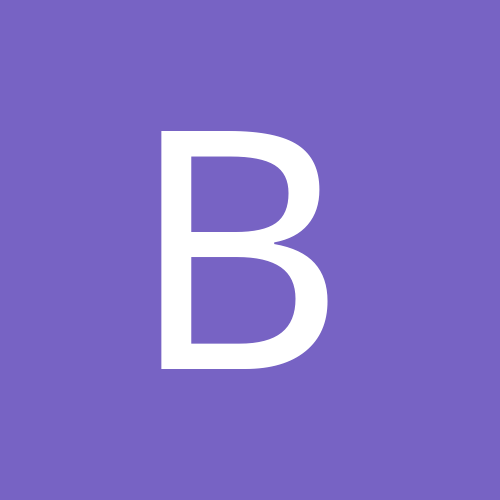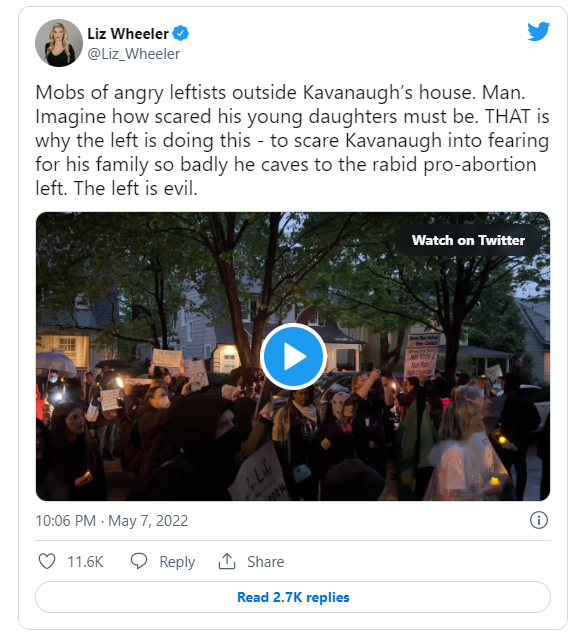Leaderboard
Popular Content
Showing content with the highest reputation on 05/10/2022 in all areas
-
Bingo. This is precisely why I am leaving my current position at Whiting HS. I teach 3 middle school computer science classes (6th, 7th, and 8th). Then in the high school I teach an AP Computer Science class, a dual credit PLTW engineering class, and 2 robotics classes. I do not have a prep. With this work load I cannot be visible in the building. I tried to get my schedule to be more "coach friendly" but it wasn't feasible. So I finally had to make a change. Whiting is my alma mater and I've been coaching here for 20 years but something had to give. Tough decision but it's the correct one.4 points
-
Take with these with a grain of salt as it is pretty difficult to find information on teams in the off season. Any insight is appreciated 6A favorites: Cathedral Can win it all: Ben Davis, Carmel, CG, Westfield, Warren Central Longshots: HSE 5A favorites: Decatur Central, Merrillville Can win it all: Michigan City, Valpo, FW Dwenger, FW Snider Longshots: Harrison WL 4A favorites: Roncalli Can win it all: Mount Vernon, East Central, Evansville Memorial, Leo Longshots: Kokomo, Brebeuf, Northridge, New Pal, New Prairie, Lowell 3A favorites: Chatard Can win it all: West Lafayette, Mishawaka Marian, Lawrenceburg Longshots: Western Boone, Danville, Tri-West 2A favorites: Andrean Can win it all: Evansville Mater Dei, Eastside, Fort Wayne Luers, Eastbrook Longshots: LCC, Indy Scecina, Linton-Stockton 1A favorites: Adams Central, Indy Lutheran Can win it all: Pioneer, Park Tudor, Covenant Christian Longshots: North Judson, Churubusco, Parke Heritage1 point
-
1 point
-
Not questioning their talent, they have plenty. But unlike the last two years, they’re replacing almost 20 multi-year starters. That’s not always easy especially playing up two classes.1 point
-
I agree. I thought that ranking was a bit puzzling. I think GS should be closer to top 5, and definitely not behind HH. I do think that GS vs. HH game will be a great matchup this year. Sure, GS will not be as good as last year, but would not be shocked at all if they make another postseason run.1 point
-
I think a preseason ranking for GS of #9 is just stirring the pot for clicks from the active fanbase. We think we will be pretty good. Also, what about Tri-West in 3A south? Hart vs Wilkerson. GS leads the series 10-5. 09-21-2012 Heritage Hills 10 - 14 Gibson Southern 09-27-2013 Heritage Hills 26 - 50 Gibson Southern 09-26-2014 Heritage Hills 38 - 33 Gibson Southern 11-07-2014 Heritage Hills 14 - 13 Gibson Southern 09-25-2015 Heritage Hills 13 - 42 Gibson Southern 09-23-2016 Heritage Hills 10 - 38 Gibson Southern 09-22-2017 Heritage Hills 7 - 48 Gibson Southern 09-21-2018 Heritage Hills 31 - 7 Gibson Southern 10-26-2018 Heritage Hills 14 - 24 Gibson Southern 09-27-2019 Heritage Hills 49 - 14 Gibson Southern 11-01-2019 Heritage Hills 21 - 20 Gibson Southern 09-25-2020 Heritage Hills 0 - 38 Gibson Southern 10-23-2020 Heritage Hills 10 - 21 Gibson Southern 09-24-2021 Heritage Hills 3 - 42 Gibson Southern 11-05-2021 Heritage Hills 7 - 42 Gibson Southern1 point
-
No. North's only real "rival" is Central and in recent years it has become a social media sh!tshow.1 point
-
Having two schools in one state is no guarantee of mediocrity (see Michigan and MSU), nor is a single school state a guarantee of success (see Minnesota). There’s a lot more to it than that. But once again, I never said anything about Coach Allen.1 point
-
IMO-Laville should be in the 2A conversation. They return everyone on their roster. They will be a favorite for their conference title. They will also give Andrean all they want in sectional.1 point
-
I was very surprised to see that whoever puts together the Hoosier High School Football page left North Judson out of the top 10. They return their main offensive producers from a semistate run and are probably favorites in the tough sectional 41. HHF releases some great content for HS football in Indiana (interviews, player/coach spotlights, etc.), but NJ should definitely be in the top 10.1 point
-
If IU wants to fire Allen and move on to the next Cameron or Dinardo in hopes of being annual competitors in the CFP's, have at it.1 point
-
Some truth, sure. But not with the high level of confidence he displayed. Westfield and Brownsburg aren’t going anywhere.1 point
-
https://mises.org/wire/postcovid-america-racked-inflation-americans-pay-too-much-drugs Patents on drugs are thought to spur innovation, but the reality is that they create industry incentives that actually lower the quality of healthcare available while pushing the price of drugs through the roof. It has been claimed that were there no patent laws and free competition in the pharmaceutical industry, many vital drugs would come within the price range of a simple ibuprofen. The reason for this is that once drugs have been invented, they are relatively inexpensive to manufacture. In the meantime, the American people are not just being fleeced on drugs over the counter, but also through the tax system by drug companies charging monopoly prices to the government. Pharmaceutical firms know there are millions of people on Medicare and Medicaid who will demand drugs at monopoly rates because they never see the price tag. This is a grand corporatist scheme that shovels billions of dollars of public money into private hands. For example, in 2014 Gilead Sciences introduced a cure for hepatitis C named Solvadi and marketed it at the astronomical price of $1,000 per pill. The cost of treating every American infected with the disease would have run $268 billion, about similar to the amount that Americans were already spending on all prescription drugs that year. Medicaid budgeted $1.3 billion to pay for Solvadi, but when faced with rationing, Hepatitis C sufferers filed a class action lawsuit in which they accused Medicaid and private providers of violating the law by refusing to cover medicines that were approved by the Food and Drug Administration (FDA). In other words, they expected the government to pay $1,000 per pill! Even people buying their own drugs end up having to pay prices that are inflated because they are competing as buyers against government and private insurance companies that are willing to shell out for them. To add insult to injury, people are even overcharged on patented drugs that they themselves paid for the research on! One study revealed that over half of the most transformative drugs invented between 1984 and 2009 had their origins in research that was supported by the state. Publicly funded universities and government organizations, like the National Institutes of Health, often lend research staff or funds to private developers. Far from incentivizing innovation, patents are encouraging companies to fiddle around with already existing treatments instead of developing better ones. Corporations are often allowed to “evergreen” (or “repatent”) their drugs just by tweaking them ever so slightly. For example, the manufacturer of Prilosec, a remedy for heartburn, extended its monopoly by getting a second patent on the pill’s coating, allowing them to remain the exclusive provider of the active ingredient. It’s no wonder it has been reported that 85 percent of new drugs are no better than the drugs already available! Companies simply withdraw the original drug from the market, forcing physicians to issue the new, more expensive one. The new drug is not qualitatively different from the previous one; it just has a fresh patent. Researchers Robin Feldman and Connie Wang published a study reporting that between 2005 and 2015 at least 74 percent of the drugs associated with new patents in the FDA’s records were not new drugs but existing ones. When a new disease comes along, it’s arguably far better to treat it with an already existing drug invented to treat other illnesses than to develop a brand new one for it. This is because we know a lot more about the safety profile and side effects of pills that have long been on the market. Patents discourage finding new ways to use older drugs because investors would much rather have the market exclusivity granted by a patent than use a safer drug that is already available in a generic form. This came into focus during the coronavirus pandemic, when already existing treatments were ignored while the medical industry rushed to put out a vaccine that was guaranteed to bring in billions, with the taxpayer footing the bill. When Dr. Jonas Salk discovered and developed one of the first successful polio vaccines, he was asked who owned the patent, and famously replied, “Well, the people, I would say. Could you patent the sun?” At that time, however, it took a relatively short time—and a fraction of what it costs now—to bring new treatments to patients. In the past, the competition would have to reverse engineer a drug in order to provide it in a generic form, and this would take some time. Now, it’s mandatory for companies to reveal their pharmaceutical compounds and make their production processes public during the FDA review process. They are not allowed to use trade secrets. This means that by the time the review process is over, other companies already know how to manufacture their drugs. As a consequence of this mandatory, open-book policy, the pharmaceutical industry depends on extreme monopoly prices and patents to recoup research costs that are artificially heightened by the complexity of the FDA’s regulatory system. Mary Ruwart, former medical researcher and author of the astonishing book Death by Regulation, explains that patents wouldn’t be necessary to ensure that pharmaceutical companies could make a profit if the regulatory system were more reasonable. She writes that between 1962 and 1980, excessive government regulations extended the time it took for a new drug to get from the lab bench to the marketplace from four years to fourteen years. Not only would this increase the cost of bringing drugs to market and increase the price to the consumer, but it would also give the competitors of drug companies plenty of time to copy their work. The government, in essence, hampers the pharmaceutical industry with the left hand and protects it with the right. Companies complain (somewhat understandably) that their costs are artificially heightened by excessive regulation and that they have no room to make a profit without patents. Especially in an environment where (allegedly) only two out of ten drugs brought to market turn a profit. So, the government has to protect the industry’s bottom line in the interests of the public good. In the end, it’s the public that pays for everything. The research studies, the regulators, the patent protections, the profits; everything is built into the inflated cost of a pill. There are at least four more reasons to doubt whether patents confer any net benefit in terms of healthcare innovation at all. The first is that patents prevent would-be inventors from mixing recent developments by others with their own “add-on” ingenuities and bringing them to market promptly. The second is that patents deter companies from researching products similar to those their competitors are researching that may appeal to the same or slightly different demographics, because if they are beaten to securing patent rights by a narrow time margin, all their research spending money is wasted. The third is that the incentive to secure monopoly rights can serve as a deterrent to sharing research and collaborating in order to keep costs down and preserve profit margins on a final product, because companies are participating in a winner-takes-all system. The fourth reason is that when one company has a monopoly on the product that serves most people that have a particular condition, there may be little reason to develop drugs for people whom the product does not fit. The research costs will often outweigh the risk of not turning a profit. Let’s take the case of Viagra, which is a very imperfect drug for the treatment of impotence for several reasons. In some people, it causes bad side effects ranging from headaches to stomach pain, and it takes more than an hour to kick in, meaning intercourse must be planned for and cannot happen spontaneously. For most patients suffering from the most severe issues, resulting from nerve damage due to diabetes or prostate cancer surgery, it doesn’t work at all. And for people who need to take it indefinitely, it becomes less effective over time and eventually stops working. Clearly there are good reasons for other treatments for impotence to be developed, but despite the shortcomings of Viagra, it is only now that the patent on it is fast running out that interest been renewed in developing alternatives. Had the drug not been patented in the first place, other companies would have been looking to find other treatments that could compete with Viagra, and no doubt some of them would be better than it in at least some respects. One alternative to restricting the supply of healthcare products by giving companies exclusive monopolies on supplying them is to offer prizes to the original creators of new drugs. In 2007, the US federal government offered the prize of a “priority review voucher” (PRV) that a successful drug maker could use to shorten the FDA approval time on a drug for certain neglected diseases. Winners could even sell their vouchers to other drug companies if they wanted. United Therapeutics reportedly received $350 million from another drug manufacturer for the PRV it won for developing a cancer treatment for young children. This kind of approach could serve as a temporary fix, but really what is called for is a tremendous loosening of regulatory restrictions on drugs and the relaxation or abolition of patent laws. Drugs can be certified as safe and effective by third parties rather than government regulators, in the spirit of Underwriters Laboratories, which is widely trusted give its seal of approval to electrical appliances. This will remove the inevitable temptation for government and insurance companies to jump in bed with Big Pharma to profit at our expense. Bingo. Get the government out of the pharmaceutical industry and let the free and open market do it's job.0 points
-
Nothing is as frightening as a left wind mob threatening you and your family. This is exactly the kind of thing that pushes people, even those who were supporters of Donald Trump, further to the right. If these people on the left believe that they have the right to treat us, their fellow Americans, with active contempt and threats of violence, then they should not be surprised when relatively moderate people become radicalized. They politicize everything, and demand compliance. These aren’t liberals anymore. They are soft totalitarians.0 points
-
0 points
This leaderboard is set to Indiana - Indianapolis/GMT-04:00









